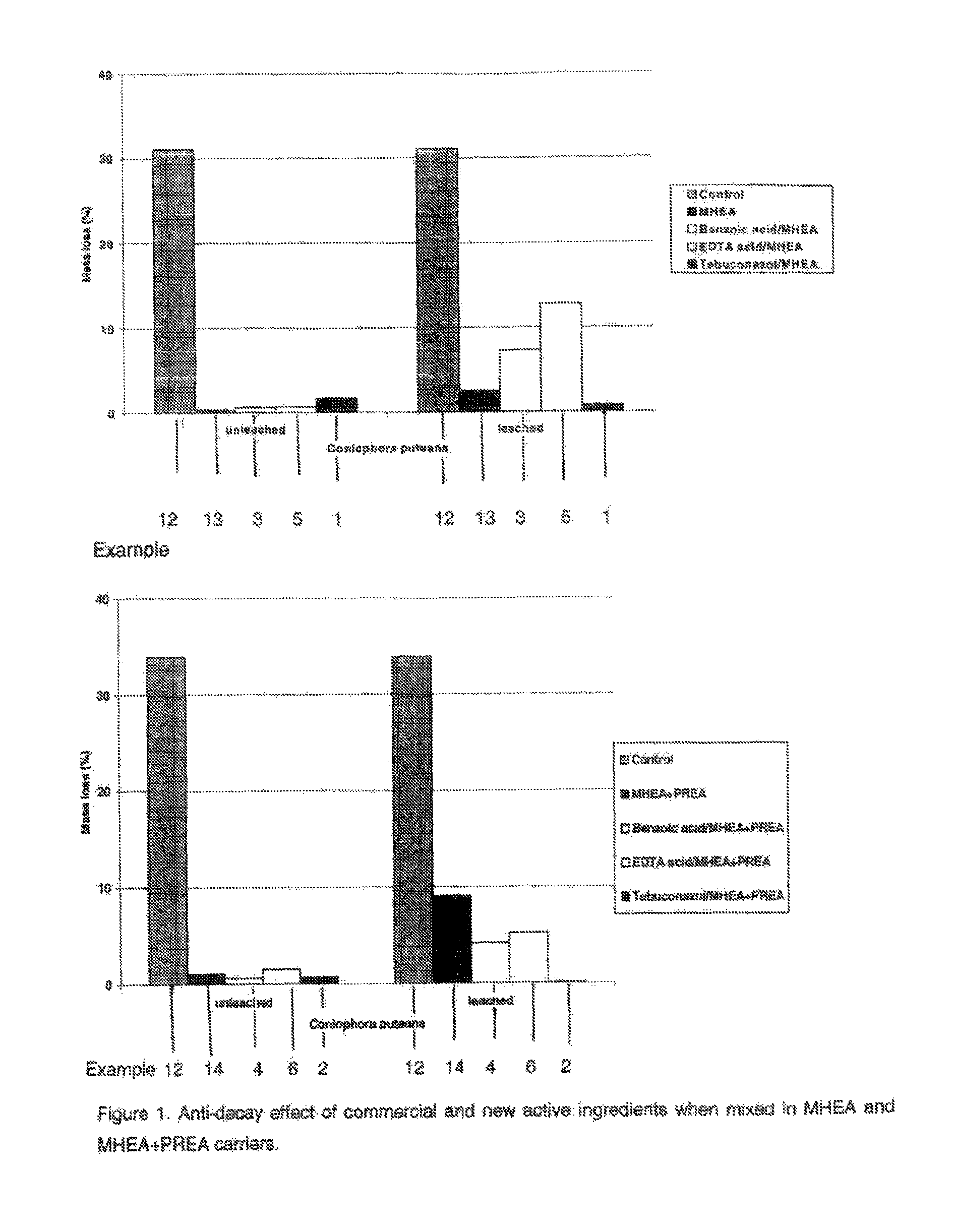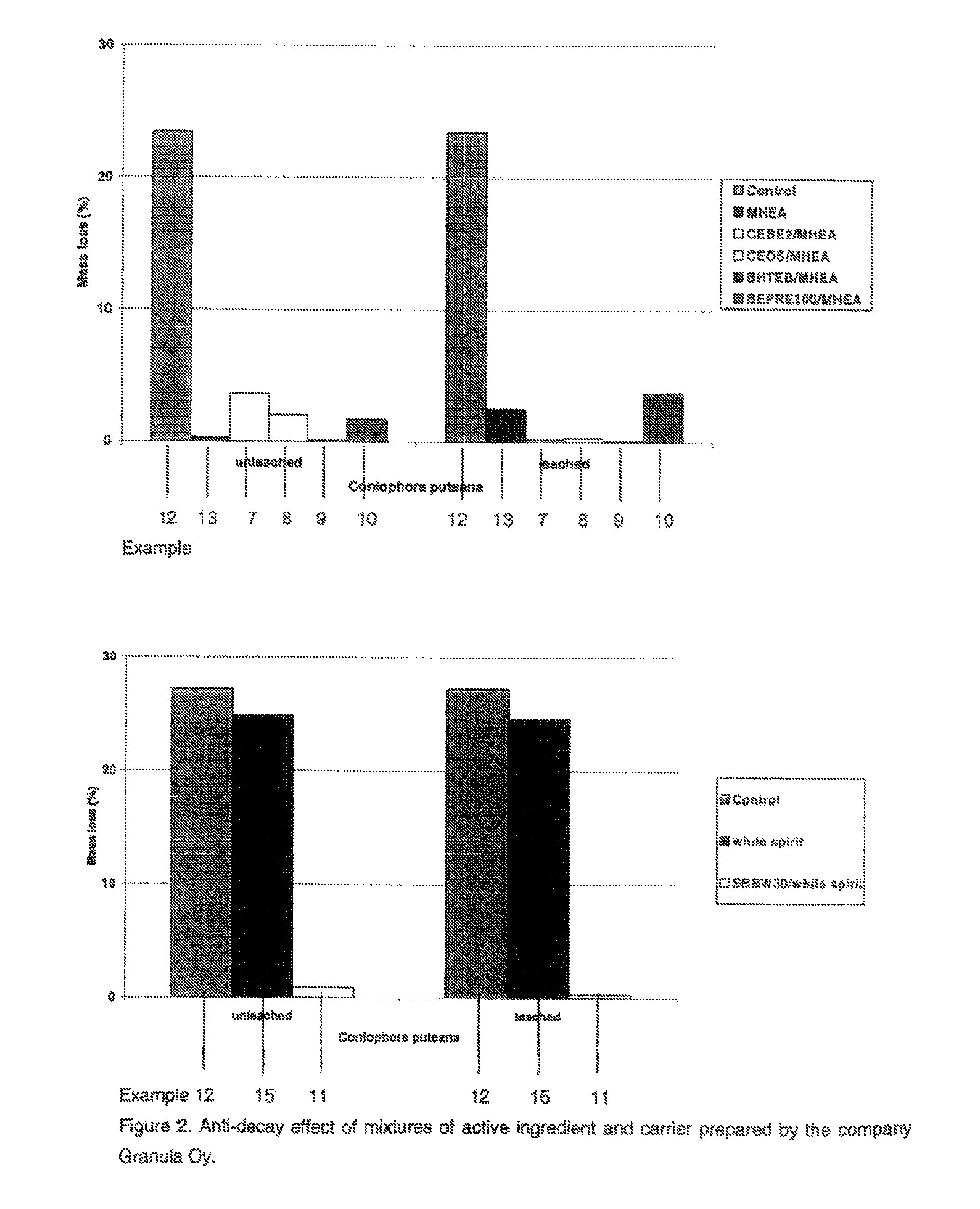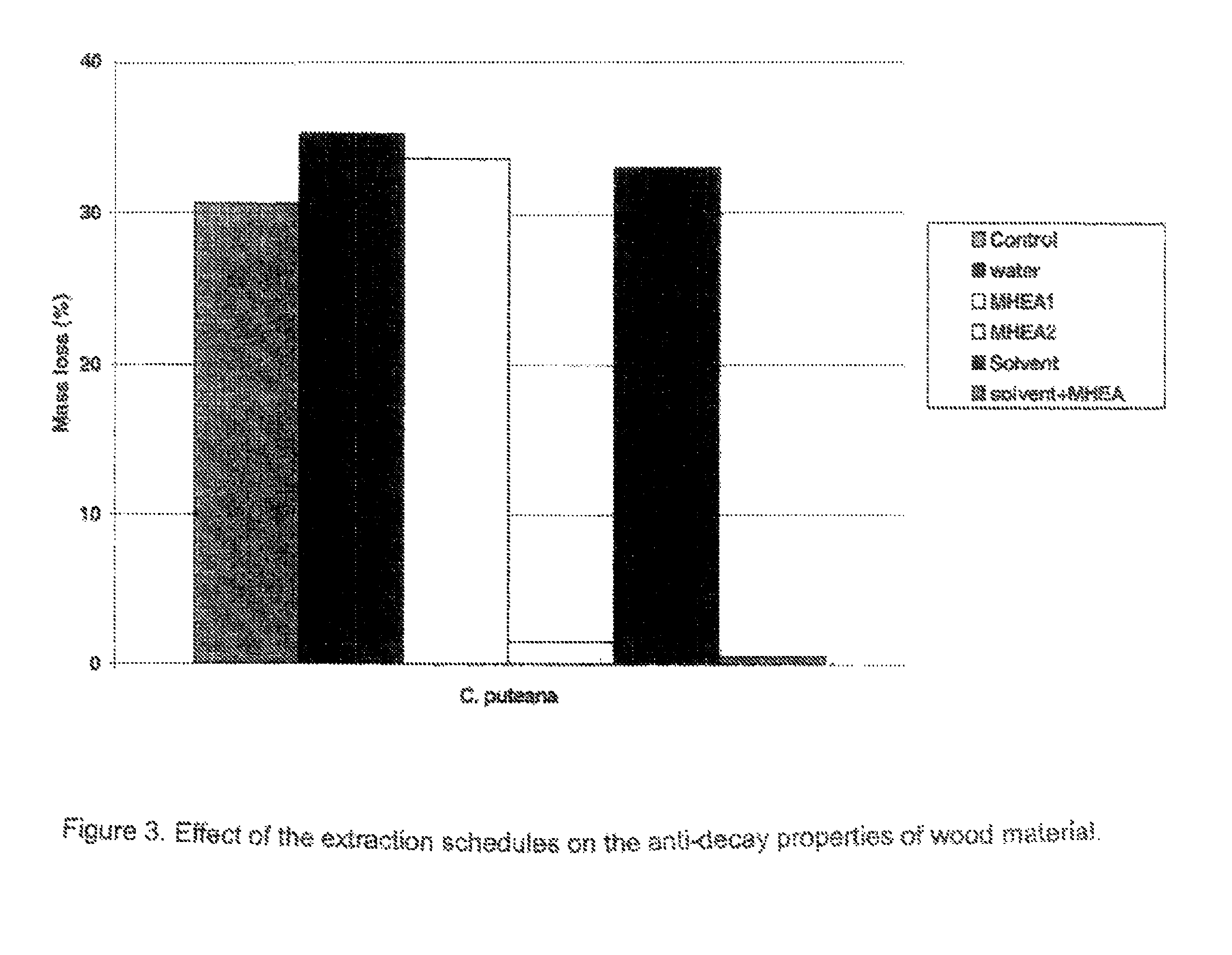Method for treating wood
a wood and treatment technology, applied in the field of wood treatment, can solve the problems of poor wood retention, unadjustable absorbing of wood, environmental and corrosion, etc., and achieve the effect of good retention and well absorbed
- Summary
- Abstract
- Description
- Claims
- Application Information
AI Technical Summary
Benefits of technology
Problems solved by technology
Method used
Image
Examples
Embodiment Construction
[0090]A number of examples are given below with the sole purpose of illuminating the invention.
Compositions
[0091]A typical aqueous solution for termite protection of food contains said wood preservative solution 0.01-10% by weight (for example phosphonate based HEDP) and the ammonium carboxylate of formula (1) and 1-45% by weight of chelative agent containing wood preservative active ingredient, the remainder being substantially water, additives and surfactants.
[0092]A typical aqueous solution for fire protection (and termites) contains said wood preservative solution (for example phosphonate based HEDP) 5-35% by weight and the ammonium carboxylate of formula (1) 1-30% by weight of chelative agent containing wood preservative active ingredient, the remainder being substantially water, additives and surfactants.
[0093]Preferably the chelating agent according to the invention is a chelating agent being able to bind iron and manganese ions and that contain phosphorus (P) in the molecula...
PUM
| Property | Measurement | Unit |
|---|---|---|
| temperature | aaaaa | aaaaa |
| temperature | aaaaa | aaaaa |
| temperature | aaaaa | aaaaa |
Abstract
Description
Claims
Application Information
 Login to View More
Login to View More - R&D
- Intellectual Property
- Life Sciences
- Materials
- Tech Scout
- Unparalleled Data Quality
- Higher Quality Content
- 60% Fewer Hallucinations
Browse by: Latest US Patents, China's latest patents, Technical Efficacy Thesaurus, Application Domain, Technology Topic, Popular Technical Reports.
© 2025 PatSnap. All rights reserved.Legal|Privacy policy|Modern Slavery Act Transparency Statement|Sitemap|About US| Contact US: help@patsnap.com



